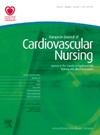STEP-ONE 计划(最佳护理教育的支持性培训和基本准备)--我们已经做了什么,STEP-TWO 版又将做什么?
IF 3.9
3区 医学
Q2 CARDIAC & CARDIOVASCULAR SYSTEMS
引用次数: 0
摘要
引言 STEP-ONE 计划是一项重要举措,旨在提高中东欧和波罗的海国家(CEE-BA)心力衰竭护理专业护士的技能和知识。目的 其重要性在于解决护士在心力衰竭管理中的关键作用,而这一领域在这些地区往往被忽视。通过培训护士提供最佳的综合护理,该计划旨在改善患者的治疗效果并减少住院次数。参与该计划的护士人数不详,但其对推进心衰护理的影响可能很大。根据 ESC HF 2023 指南6 ,考虑到 HFrEF、HFmREF、HFimEF、HFpEF 患者的情况,并考虑到试点项目的实施,计划将该计划作为 STEP-TWO 版继续更新护士和患者资料:(1a)评估 HFpEF 风险7 并就进一步诊断向医务人员提出建议;(1b)根据指南分析推荐的疗法;(2)试点培训计划中心--波兰中心--中欧和东欧地区;(3)试点研究计划--2-3 个中心的 1a 和 1/b(图 1);(4)试点培训计划中心--中欧和东欧地区;(5)试点研究计划中心--中欧和东欧地区;(6)试点研究计划中心--中欧和东欧地区;(7)试点研究计划中心--中欧和东欧地区;(8)试点研究计划中心--中欧和东欧地区;(9)试点研究计划中心--中欧和东欧地区。1).该计划开展的所有活动都旨在改善对心衰患者的护理,可视为在欧洲国家提供合格人才的典范解决方案。结论 STEP ONE 教育计划是在医疗界,尤其是护理心力衰竭患者的护士的参与下制定的。为护士和患者准备的教材以及教育计划已在波兰和中欧、东欧和非洲地区实施。在第二阶段,将根据 2023 年心房颤动指南编写最新材料。一项试点研究将评估对心房颤动护士进行 HFPEF 患者风险评估教育的影响,以及根据 GDMT 识别未接受最佳治疗的患者的影响。该计划的试点中心将对高血压患者的治疗路径进行优化,并寻求高血压护士和心脏病专家之间的合作。此外,STEP-TWO 计划还将包括编写教育材料,不仅关注患者,也关注护理人员。本文章由计算机程序翻译,如有差异,请以英文原文为准。
The STEP-ONE program (Supportive Training and Essential Preparation for Optimal Nursing Education) - what have we done and what will we do in the STEP-TWO edition?
Introduction The STEP-ONE program was a significant initiative designed to enhance the skills and knowledge of nurses specializing in heart failure care in Central and Eastern Europe, and the Baltic countries (CEE-BA). Purpose Its importance lies in addressing the crucial role of nurses in heart failure management, an area often overlooked in these regions. By training nurses to provide optimal, integrated care, the program aims to improve patient outcomes and reduce hospitalizations. The number of nurses who participated in the program is not specified, but its impact is likely substantial in advancing heart failure care. Continuing the program as the STEP-TWO edition is planned to be updated of nurses and patients materials according to ESC HF 2023 guidelines6, taking into account the profile of the patient with HFrEF, HFmREF, HFimEF, HFpEF and taking into account the implementation of pilot projects: (1a) Assessment of HFpEF risk7 and recommendations for medical staff regarding further diagnostics; (1b) Analysis of recommended therapies according to guidelines; (2) Pilot training Program center Poland centers- CEE-BA; (3) Pilot research programs - 1a and 1/b in 2-3 centers (fig.1). All of the activities undertaken in the program are intended to improve care for heart failure patients and can be seen as a model solution for providing qualified personnel in the European countries. Conclusions The STEP ONE educational program was developed with the participation of the medical community, especially nurses caring for HF patients. Educational materials for nurses and patients, as well as an educational program, were prepared and implemented in Poland and the region of CEE-BA. During the second phase, an updated materials with the 2023 guidelines on HF will be prepared. A pilot study will evaluate the impact of educating HF nurses on patient risk assessment of HFPEF and on identifying patients who do not have optimal therapy according to GDMT. Optimization of the HF patient pathway at the pilotage centers of the program and collaboration between HF nurses and cardiologists will be sought. Moreover, the STEP-TWO program will include preparing educational materials focused and dedicated not only on patients but also on caregivers.
求助全文
通过发布文献求助,成功后即可免费获取论文全文。
去求助
来源期刊

European Journal of Cardiovascular Nursing
CARDIAC & CARDIOVASCULAR SYSTEMS-NURSING
CiteScore
5.10
自引率
10.30%
发文量
247
审稿时长
6-12 weeks
期刊介绍:
The peer-reviewed journal of the European Society of Cardiology’s Council on Cardiovascular Nursing and Allied Professions (CCNAP) covering the broad field of cardiovascular nursing including chronic and acute care, cardiac rehabilitation, primary and secondary prevention, heart failure, acute coronary syndromes, interventional cardiology, cardiac care, and vascular nursing.
 求助内容:
求助内容: 应助结果提醒方式:
应助结果提醒方式:


